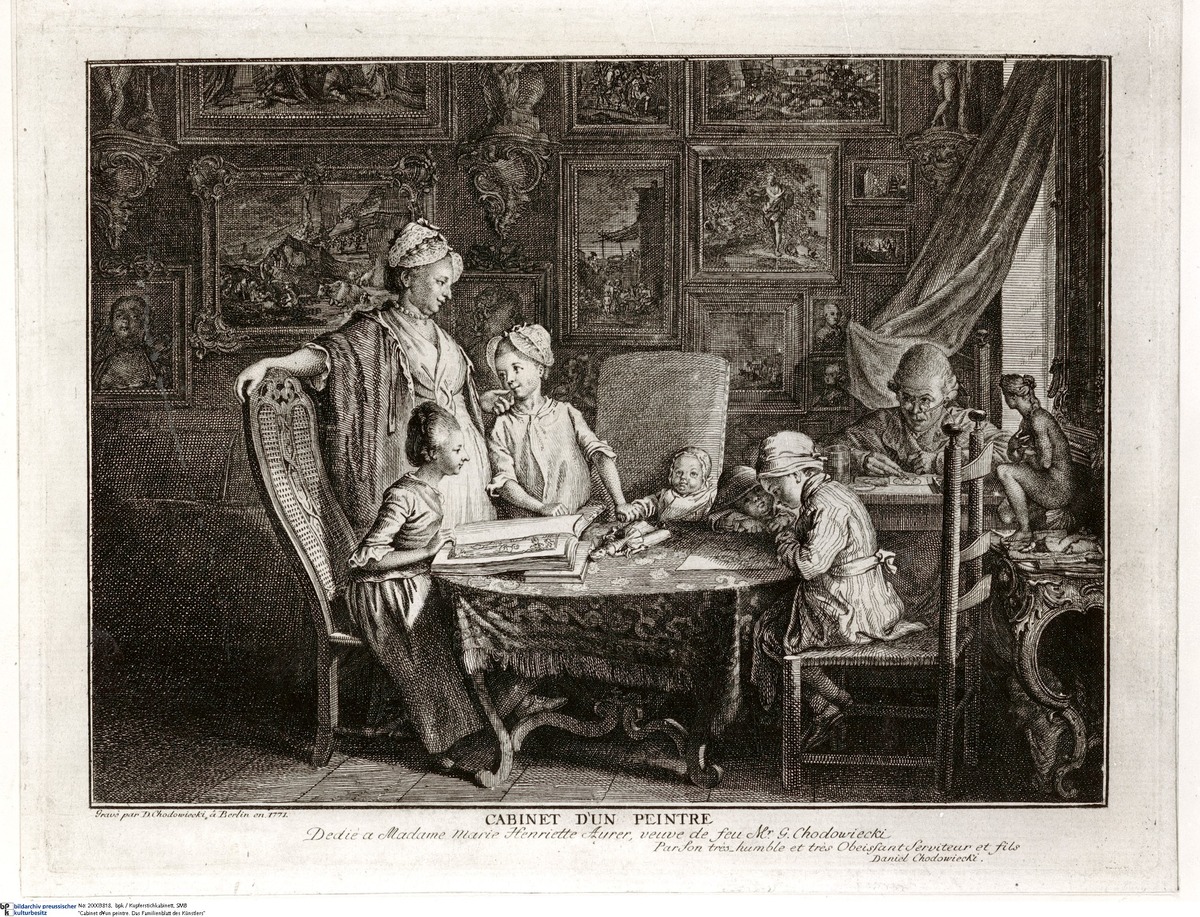Source

Source: bpk-Bildagentur, image number 20003818. For rights inquiries, please contact Art Resource at requests@artres.com (North America) or bpk-Bildagentur at kontakt@bpk-bildagentur.de (for all other countries).
A versatile and highly prolific copperplate engraver, draftsman, and painter, Daniel Nikolaus Chodowiecki (1726-1801) was the most popular German illustrator of the second half of the eighteenth century. His work captured the worlds of the nobility, the bourgeoisie, and the common people in the age of Frederick II (the “Great”) of Prussia (r. 1740-86). His illustrations for early editions of works by Johann Wolfgang von Goethe (1749-1832) and Friedrich Schiller (1759-1805) added to his renown. Cabinet d'un Peintre [A Painter's Cabinet] (1771) is Chodowiecki’s most famous print. The etching shows the artist and his family at their home in Berlin. Chodowiecki, who was born in Danzig (then part of the Polish-Lithuanian Commonwealth), left his native city at the age of seventeen and settled with an uncle in Berlin. The etching, executed almost thirty years later, was apparently intended as a gift for his mother, who had never met her grandchildren. The portrait has been read as a commentary on middle-class values, specifically the virtues of education and self-improvement. The room (his cabinet, or studio) is richly ornamented with paintings and other works of art. At the time, Chodowiecki was a member of the Academy of Fine Arts in Berlin; he eventually went on to become the school’s director.

Source: bpk-Bildagentur, image number 20003818. For rights inquiries, please contact Art Resource at requests@artres.com (North America) or bpk-Bildagentur at kontakt@bpk-bildagentur.de (for all other countries).
bpk / Kupferstichkabinett, SMB